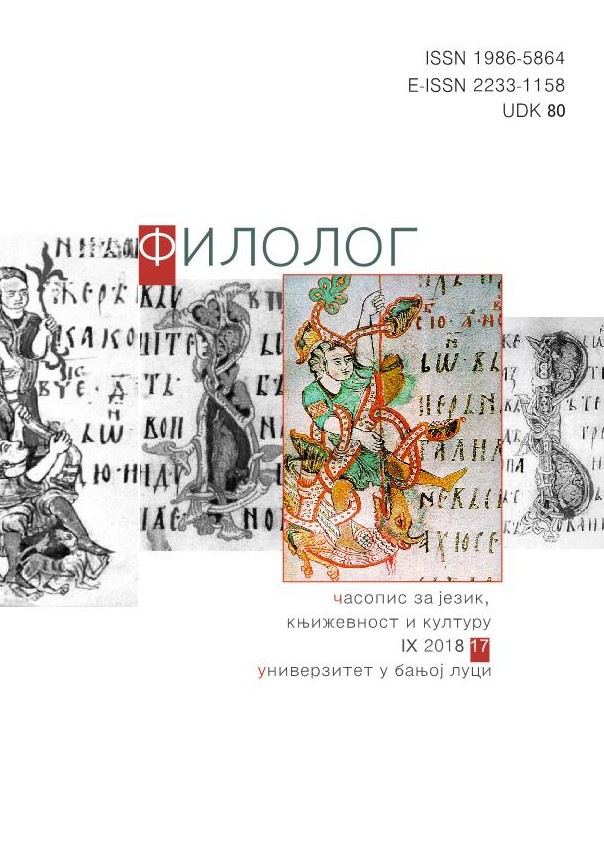Пандани у фикционалном свету Маргарет Етвуд: Грејс Маркс и Мери Витни
Counterparts in Margaret Atwood’s Fictional World: Grace Marks and Mary Whitney
Author(s): Milena Z. NikolićSubject(s): Language and Literature Studies, Studies of Literature, Comparative Study of Literature, Other Language Literature, Philology, Theory of Literature
Published by: Филолошки факултет Универзитета у Бањој Луци
Keywords: actual world; possible world; transworld identity; Margaret Atwood; Alias Grace; Grace Marks; Mary Whitney.
Summary/Abstract: The subject of transworld identity has been highly controversial both in philosophical and literary theories. Opinions range from the view that the notion of an identity that holds between objects in distinct possible worlds is so problematic as to be unacceptable, to the view that the notion is utterly innocuous, and no more problematic than the uncontroversial claim that individuals could have existed with somewhat different properties (Mackie et al. 2013). The criteria for identification and determination of transworld identity are used from Lubomir Dolezel’s theory of possible worlds. The aim of this paper has been to identify and analyse the ways in which the relation between the prototype and its counterpart is established in a work of fiction, in particular Margaret Atwood’s novel Alias Grace (1996), as well as to detect elements that point at the existence of a transworld identity between the two individual entities (the novel’s two female characters). Namely, our goal has been to show that there is a possibility that the individual entities exist both in the actual world of the text (AWT) and the alternative possible world (APW), which is parallel to the AWT. We have focused on the trans-world relation between the two female protagonists of Atwood’s novel – Grace Marks and Mary Whitney. We have endeavoured to show that Grace Marks (the novel’s main protagonist) and Mary Whitney (supposedly her best friend) serve as an example of the way in which the transworld identity is established. It has been concluded that the/a transworld identity was established on two levels. First, the transworld relation is determined between the characters that share the same proper name: the real Grace Marks (a historical figure that lived in the 19th century in the US) and the fictional Grace Marks (Atwood’s heroine). Also, the/a transworld relation is detected between the characters with a different proper name, in particular, between the fictional Grace Marks and her counterpart in the character of Mary Whitney. Due to the fact that no one (and nothing) within the novel could confirm the existence of Mary but Grace herself, there is a possibility that Mary functions as a mere product of Grace’s imagination – her alter-ego. We may reasonably assume that Grace and Mary are the same person existing in different worlds. This becomes evident the moment Mary leaves the AWT (she dies) and becomes an inhabitant of the world of the dead (APW). Soon we learn that she pays a visit to the AWT (in the episode of Grace’s hypnosis) by entering Grace’s body and speaking through her. The episode on hypnosis blurs the borders between the two worlds and confirms the idea that Grace and Mary are the genuine representatives of the transworld entities.
Journal: Филолог – часопис за језик, књижевност и културу
- Issue Year: 2018
- Issue No: 17
- Page Range: 628-643
- Page Count: 16
- Language: Serbian

